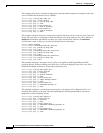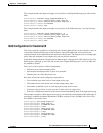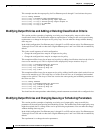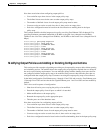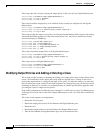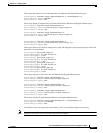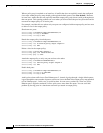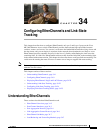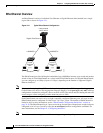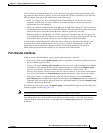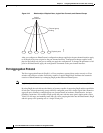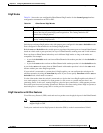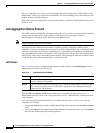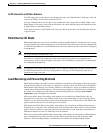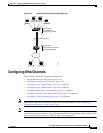
34-2
Cisco ME 3400 Ethernet Access Switch Software Configuration Guide
OL-9639-06
Chapter 34 Configuring EtherChannels and Link-State Tracking
Understanding EtherChannels
EtherChannel Overview
An EtherChannel consists of individual Fast Ethernet or Gigabit Ethernet links bundled into a single
logical link as shown in
Figure 34-1.
Figure 34-1 Typical EtherChannel Configuration
The EtherChannel provides full-duplex bandwidth of up to 800 Mbps between your switch and another
switch or host for Fast EtherChannel on a switch with 24 Fast Ethernet ports. For Gigabit EtherChannel,
you can configure up to 8 Gbps (8 ports of 1 Gbps), depending on the number of supported Gigabit
Ethernet interfaces.
Note Only network node interfaces (NNIs) and enhanced network interfaces (ENIs) support Link Aggregation
Control Protocol (LACP) or Port Aggregation Protocol (PAgP). Use the port-type {eni | nni} interface
configuration command to configure a port as an ENI or NNI. The switch must be running the metro IP
access image to allow configuring of more than four ports as NNIs.
Each EtherChannel can consist of up to eight compatibly configured Ethernet ports. All ports in each
EtherChannel must be configured as either Layer
2 or Layer 3 ports. The number of EtherChannels is
limited to 48. For more information, see the
“EtherChannel Configuration Guidelines” section on
page 34-10. The EtherChannel Layer 3 ports are made up of routed ports. Routed ports are physical ports
configured to be in Layer 3 mode by using the no switchport interface configuration command. For
more information, see the
Chapter 9, “Configuring Interfaces.”
Note The switch must be running the metro IP access image to support Layer 3 ports.
101237
Catalyst 8500
series switch
Gigabit EtherChannel
Workstations
10/100
Switched
links
Workstations
10/100
Switched
links
1000BASE-X 1000BASE-X



